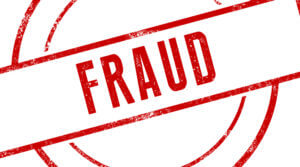Just a quickie blog post this week to cover some questions I’ve gotten from my readers about Amazon seller account reinstatements. While I’m thrilled every time a client gets reinstated, I would be even happier if they didn’t get suspended in the first place:
Q. Are there some transgressions Amazon won’t forgive?
While it is possible to get reinstated for many policy violations and performance problems, it is very difficult to get them to look at your case if you are banned for counterfeit, fraud or other suspected illegal activity. In these cases you must strongly prove your innocence. As I have learned working with sellers on reinstatement, your pleas that you are sorry, won’t do it again, made a mistake, etc., most likely will fall on deaf ears in these particular situations. They won’t tell you where the claim came from (could be a competitor, a customer or some other source completely). If you are like one of my clients, you may have to hire a lawyer and a private investigator to get to the bottom of why you were banned. That’s how tough it is.
Q. I’m nervous by all these stories about suspensions and bans. What can I do to protect myself?
Forewarned is forearmed. The best time to clean up your act business-wise is before Amazon notices you. Here are 10 Actions you can take right now to help protect you against future problems:
- Examine all your listings on Amazon.com. Look at the picture, read the description. If your product does not match the listing 1000+%, suspend the listing until you can either fix it or create a new one that does match your personal inventory. When listing, I rarely look at the actual full listing on Amazon.com and that can be a mistake. I’ve had situations where the same UPC code was used for two different sizes (by the manufacturer) and I accidentally listed XL against Small. I was able to catch that before the inventory hit the warehouse. Another situation where the fact that the product was a 12-pack was hidden in the description and not in the title of the listing. In my case, I have an assistant that can do that for me. If you are a solo, then you need to do this exercise right now. You may have some mistakes in your inventory.
- Don’t note your differences in the notes. I’ve seen this with several of my clients who were banned for this. Their product was missing a piece or a different color or something similar and they noted it in their description. You can’t do that. The notes are for condition notes like “corner is worn, box is damaged” not “missing three pieces.” All products on Amazon MUST be complete. If you have any mistakes like this in your inventory, delete them at once and return or destroy the product.
- DELETE your faulty listing. As far as Amazon is concerned, your listing is live as long as it exists in your inventory even if you have zero units listed against it and are not selling on it. If you have any mistakes, be sure to DELETE the listing, not just close it or archive it. You can do this with the button on the far right-hand side of the screen when you pull up your inventory in the “Manage Inventory” screen.
- Be prepared to back-up every purchase. This is crucial. You must prove that your inventory came from a legitimate source. In the case of DVDs, Jewelry and electronics, buying them at thrift stores, garage sales, estate sales, from liquidators, off some guy on eBay…all of these will lose your privileges forever. If you are buying from a large retailer like Target, you should be fine. Buying from a wholesaler is a different story. See my previous blog post about how to check out a partner. If you are ever accused of counterfeit or inauthentic products, having proof that you bought properly is the only way to get back.
- Get approved to sell in counterfeit-sensitive categories before listing. In electronics, jewelry and DVDs in particular, I would recommend that you first get permission to list a branded product before sending it in the first time. Nearly all of the major brands have restrictions of some kind on them. Present your invoice to Amazon and get on the approved list before sending it in. You may find out that there are some brands you cannot sell unless given specific permission by the manufacturer in writing. In electronics, it helps if you are an approved reseller first and then sell it on Amazon. I have one client who has had a terrible time with a particular product because his competitors keep filing policy violations on him. He has the proof that he is buying direct from an authentic source, but he is tired of having to prove it over and over and over again to Amazon (who apparently does not read past activities on this ASIN before sending him a letter).
- Nail your performance metrics. If you are late responding to customers, late sending out shipments, late providing refunds…now is the time to clean up your act before Amazon takes action. Make every indicator green on your performance dashboard. It may take months for it all to show up green again since some metrics are for the previous 90 days performance.
- Appeal every negative feedback and A-to-Z claim. I’m surprised at how many sellers do not realize they can do this. Once you fix the

negative feedback situation (apply a refund, send a replacement, whatever the issue is), you should ask for the customer to remove their negative feedback. You can also use Amazon’s automated system to do this for many types of feedback like product reviews, complaints about shipping (Assuming you use FBA, Amazon will take responsibility), etc. A-to-Z claims are REALLY serious! If you get more than one, you need to stop and look at what is going on in your operations. A-to-Z claims are what sellers file when they can’t get satisfaction from you. Responding quickly to customer inquiries and refund demands is the best way to avoid A-to-Z claims. Sometimes, though, you get impatient people who file anyway. You should 1) immediately refund their money and 2) appeal the A-to-Z claim. There is a whole process to do this.
- Respond to every performance notification that is about a policy violation or performance metric – no matter what. Amazon will often give you a warning before suspending you (depending on the issue). You may get a performance notification that says you do not need to respond. I suggest you respond quickly acknowledging the notification and how you are taking action. A lot of these notifications are telling you that your product doesn’t match the listing. You MUST fix this now! One more complaint and you will be suspended. That is the only warning you usually get. Take action and document what you are doing. That way you can show Amazon that you react quickly to their feedback and are a good seller partner.
- Make your listing perfect. If you created the listing, make sure your picture is perfect (see Amazon’s guidelines and follow them slavishly), your bullets and description are clear and detailed. Leave no room for ambiguity. Just because you see your competitors doing it, DON’T put your business name in the listing; DON’T add your phone number or website. These are policy violations.
- READ ALL OF AMAZON’S POLICIES – Ignorance of the policies is no excuse to Amazon and I’ve seen a lot of sellers lose their right to sell because they didn’t read them. Read everything – your lengthy contract, the policies, how to pack a box…everything. Don’t assume you know; don’t assume the folks on Facebook know what they are talking about; don’t assume your eBay/Etsy/etc., experience applies here. It doesn’t. Amazon doesn’t hide anything. All their rules are on SellerCentral under “Help” and you are responsible to know them. You agreed to their terms when you became a seller including the fact that they can kick you off with no explanation. They can keep your inventory (yes, you agreed to that) if they suspect fraud. This is their sandbox. You need to know the rules.

Q. I have a competitor that keeps making trouble for me with false policy violations, what can I do?
There are recourses and I have helped my clients with this situation, but it is tough because Amazon is more likely just to shut things down than to read carefully through the situation. On the other hand, that other seller is playing with fire. If you can prove they are wrong and likely doing this on purpose, they will be the ones to lose their selling privileges forever. Here’s what I want to say to all sellers reading this blog post: Don’t be Evil. Not only does it damage your soul, it will bite you in the butt if the seller fights back and wins. I’ve watched it happen. I’ve helped make it happen.
Q. Amazon not only banned me, they won’t even let me log in. Can you help me?

I don’t know. Most banned sellers are still allowed into their accounts so they can return inventory, take care of lingering customer requests, etc. After 90 days Amazon will send their money back and ask them to close the account (if there is still inventory up there). If Amazon has blocked you from logging in, your problem is serious. They suspect you of criminal activity. Your inventory is evidence and will not be returned, nor will any money you had in the account. They may report you to the authorities. I have some internal email addresses we can try but only if you have compelling evidence of your innocence. You need to find out why they banned you exactly and see if you can figure out where the mistake was made. We need hard evidence. I have one client that I sincerely believe is innocent but I can’t help him until he unravels the mystery…and it is a mystery. He doesn’t know what they are basing their claim no which makes it really hard to address with evidence.
Q. Where can I find my contract and Amazon’s policies?
In SellerCentral. I suggest you print them off and put them in a 3-ring binder with tabs so you can refer to them from time to time. The first time I read the policies, a lot of them didn’t apply to me and I didn’t remember them. By going back to them later, I see them in a different light. If it has been a while since you read the policies, pull them out again. It won’t take that long and it may help you keep your business running.
Q. What business practices get sellers in the most trouble?
Merchant-fulfilled gets sellers in trouble when they can’t keep up with the demand or meet Amazon’s exacting metrics. In addition, it is harder to get negative feedback removed. If you are selling high volume, Amazon will throttle you for a while until you prove you can handle the demand. They will hold on to your money until they see what your returns level is and how much to keep in escrow for you. Admittedly, this is a high-class problem to have. Most of us are not so successful right out the gate that Amazon puts limits on us, but they don’t know you as a MF seller so you have to prove yourself. You are on probation when you first start selling on Amazon – particularly if you are are MF – but all of us are. Of the sellers who get in trouble that I’ve seen, a huge percentage of them got into trouble within the first six months.

Drop shipping is also a big one. The fact that it is so heavily promoted as “easy money” should raise a red flag. Done right, drop shipping is work just like retail arbitrage. Amazon doesn’t forbid drop-shipping, but they don’t like it either. The problem comes up when you cannot provide the product fast enough for Amazon’s guidelines (which they’ve just tightened up, by the way), if your drop-shipper damages the product or provides a substitute or if it provides non-authentic product. Even worse, they are out of stock and you only have a few days to get product to the customer. Since you don’t see the merchandise and you don’t deliver the merchandise, you are at the mercy of someone else for your customer satisfaction stats. One of my clients had three A-to-Z claims close together directly related to three different drop-shippers he was working with. It was hard getting him reinstated.
Another problematic practice is not checking out your supplier and/or buying from a broker on eBay or elsewhere. You need to know where your product is coming from and that it is authentic. If you are buying retail arbitrage from a well-known chain store, fine. If you are buying from some mom & pop discount retailer that looks like their goods fell off the back of a truck…beware. You can check out my recent blog post on counterfeit if you want to know more about how to check out a supplier.
Listings not matching the product delivered is a big problem and Amazon is cracking down hard on that. What makes it trickier is that customers with a complaint have that as one of their first options for why they want to return their goods. They are usually not so careful as we are to pick the correct reason. If you are getting returns with the customer saying the product was not as they expected – watch out. They will add up and Amazon will consider them in the mix of reasons why you might get suspended.
And the number one offense I see? Not taking care of Amazon’s customer. Slow responses to inquiries, slow refunds, late deliveries, lots of negative feedback in relationship to your positive feedback…all these will get you kicked out fast.
The things that Amazon demands of us are not strange and shouldn’t be too bewildering to anyone. These are good business practices, period. Take care of the customer, provide a good product, react fast when you make a mistake. Don’t argue with the customer. Don’t try to cut corners with questionable business practices or questionable sources of inventory.
I have been writing a lot lately about how sellers get in trouble and I don’t want to be a downer – I love selling on Amazon.com. What I did not realize until recently was how many sellers didn’t know the rules. The number of suspended/banned sellers out there is far more than I ever imagined. My goal with these articles is not to scare people, but to strengthen them as sellers. As I said, forewarned is forearmed. It is hard to prove a negative, but I hope that these blog posts help sellers from ever needing my reinstatement services. I would love to say “My business sucks! No one is suspended anymore!”
Happy selling everyone!
PS. Please be aware, my blogs are based on my experience and opinion, and should be read along with Amazon’s rules – not in place of them.





